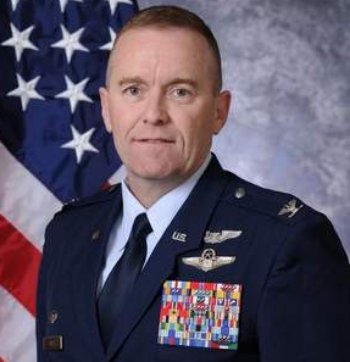The head of the US Air Force’s remotely piloted aircraft (RPA) Capabilities Division expects a major review to be complete by the end of September.
 Colonel Bill “Sweet” Tart told an audience at the annual Association for Unmanned Vehicle Systems International (AUVSI) convention last week that the service’s RPA Vector report is in its final stages.
Colonel Bill “Sweet” Tart told an audience at the annual Association for Unmanned Vehicle Systems International (AUVSI) convention last week that the service’s RPA Vector report is in its final stages.
“We’ve got through all the three-stars now, and it will be hitting the chiefs desk in the next week or two,” Tart said. “No later than the end of September would be my bet.”
The Vector report, which Tart estimates will be about 100 pages, will focus on large themes for RPA use for the service.
“What do we need in a next-generation RPA 25 years from now with respect to propulsion? What do we need in regards to structure? What do we want in regard to interoperability and connectivity?”
The report is required to be updated every two years, something Tart supports. “That way it continues to get the amount of attention it needs,” he said. “Hopefully, I can steer people’s [independent research and development] into areas that we care about, and areas they care about. So I think the rewrite, and mandating that we do that, is really important.”
While there will be “about a page” on autonomous systems, Tart said the focus is very much on large remotely piloted vehicles such as the MQ-1 Predator and MQ-9 Reaper. He added that while smaller unmanned systems will be briefly covered, he would not be surprised to see the Air Force launch a future report focused on smaller platforms.
Tart also said the report will highlight the need to work with other services on unmanned systems.
“It will talk about things like RPAs that are an enterprise that, if mishandled by any service, government agency or civilian, will impact everyone,” Tart said. As an example, he pointed to potential fallout from a crash between an airliner and an unmanned system — it wouldn’t matter if it was an Air Force, Navy or civilian unmanned system that caused the crash.
“So we have a great working relationship with the Navy, Army and Marines on aviation safety, and the need for everyone to understand these are all interrelated.”
In contrast with the Air Force, neither the Navy nor Marines hasplans for similar reports, according to service representatives.
“It’s probably something we need to take a look at, but we’re not in the midst of drafting one right now,” Capt. Chris Corgnati, a Navy representative appearing at the same panel as Tart, said when asked about a potential Navy plan. Similarly, Marine Lt. Col. James Hamill said his service is still operating from a 2011 plan. “We probably need to update that, and that is on my plate of things to do,” he said.
The timing of the report is fortuitous, as Tart told the audience that the service will hit 2 million combat hours on the Predator and Reaper sometime in late October.
Source: Defense News
